We disassemble the types of paints and we advise you to pay attention to when choosing.
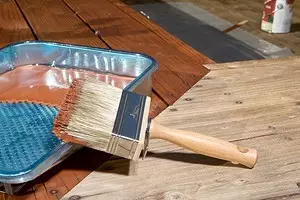
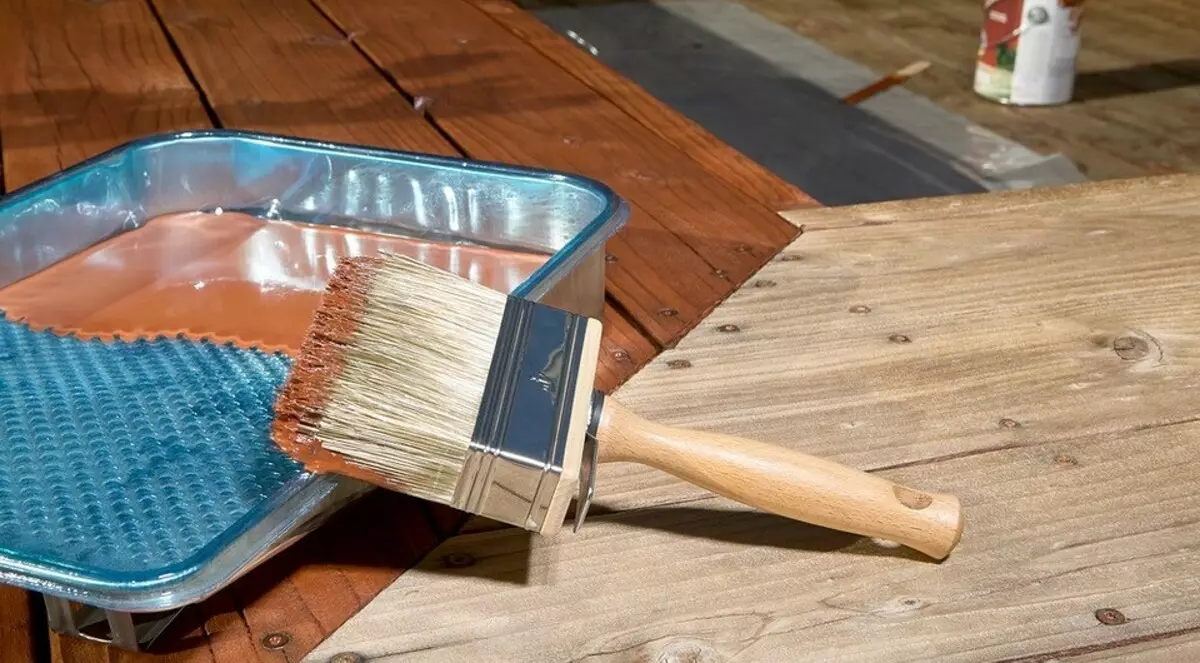
The nomenclature of paintwork materials used to protect the tree is extremely extensive and in the most common form can be divided both by the scope and external signs. A large group of materials for wooden facades, except for the colors themselves, includes all sorts of impregnation and primer. The right choice of impregnation, primers and paints and their integrated use allows you to achieve the fact that the final coating will be more reliable and durable, which is impossible to achieve with a simple, even be very thorough, painting. After all, no wonder most manufacturers produce whole complexes of materials - a variety of primers and primers, and in the instructions on use indicate how and how the surfaces before painting should be processed. In our article - a full analysis of all kinds and tips, which paint to choose for a tree.
All about choosing paints for wood
Types of paints in appearanceAccording to the composition
- Acrylic
- Water distribution
- Alkyd enamel
- Acrylic enamel
- Oil
Additional compounds
Tips for choosing
Tips for staining
Types of paints in appearance
In appearance, paints and varnish materials can be divided into three groups: transparent coatings, dispersion paints and opaque enamels.
Transparent
Under transparent coatings, protective lazaries (glaze), impregnating agents and transparent varnishes. They may contain additives of pigments and identify the natural structure of the tree. In this case, such coatings have high vapor permeability, which helps to remove moisture from surface treated with them. As a rule, these compositions include substances that perform the role of the ultraviolet filter. The treated tree acquires protection against destruction under the action of sunlight and resistance to aging. Re-processing is recommended after 1-3 years without removing the previous layer.
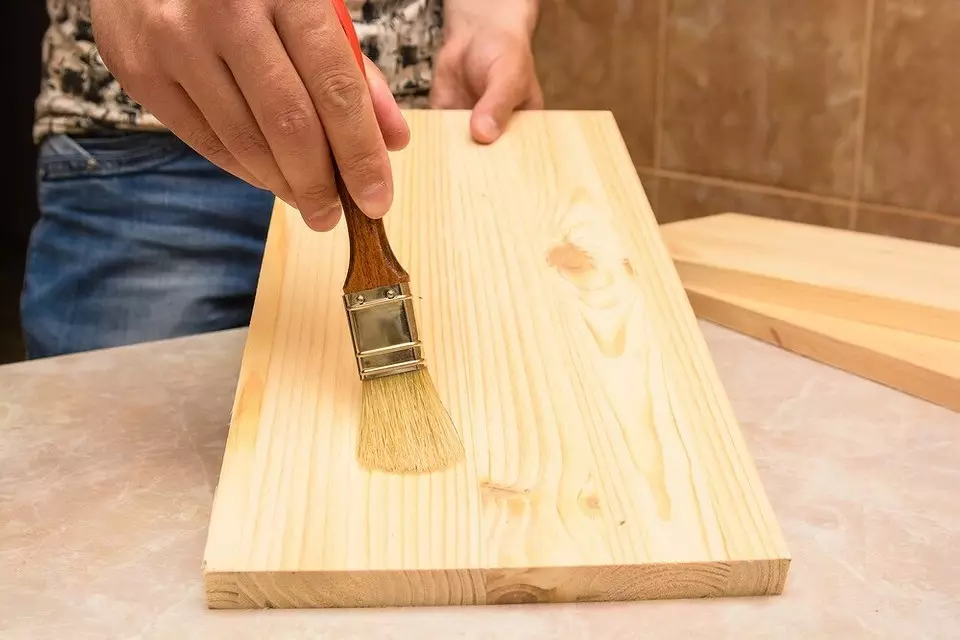
Dispersion
Dispersion acrylic paints in recent years are becoming increasingly popular. In them, water is used as a solvent, and as a binder - most often acrylate or their copolymers. Abroad their share reaches 80-85% of the total production of paints and varnishes.
The coatings obtained as a result of applying such paints distinguishes the atmospheric, water and color resistance, besides, they are vapor permeable, that is, the wooden elements breathe (water resistant protects the surfaces from atmospheric moisture, vapor permeability provides removal from the painted moisture constructions).
After applying to the surface and formation of the film, their solvent - water - evaporates, as a result of which the coatings become frost-resistant. But before use, that is, in the packages (banks, etc.), the acrylic paints are strictly prohibited. They can either die due to the destruction of emulsion and bundle, or lose most of their properties.
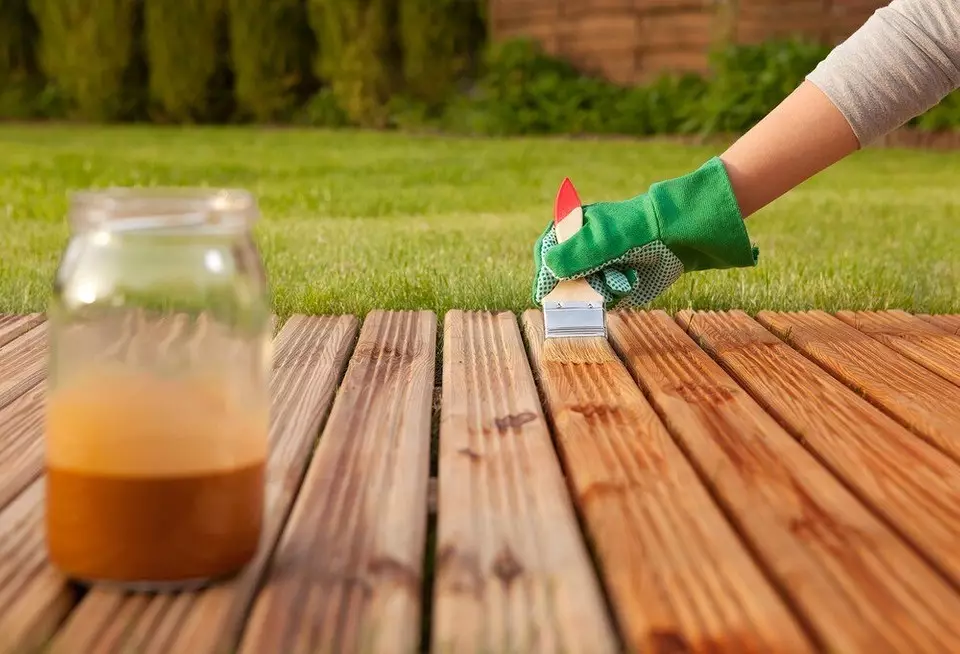
Opaque enamel
With the advent of water-dispersive paints, the use of traditional varnishes and enamels has decreased significantly, although they are still popular due to the high quality of coatings, simplicity and ease of use. Their main disadvantages are toxicity and fire hazard. Alkyd, vinyl chloride, acrylic, polyurethane and some others are most popular among the paints on organic solvents.
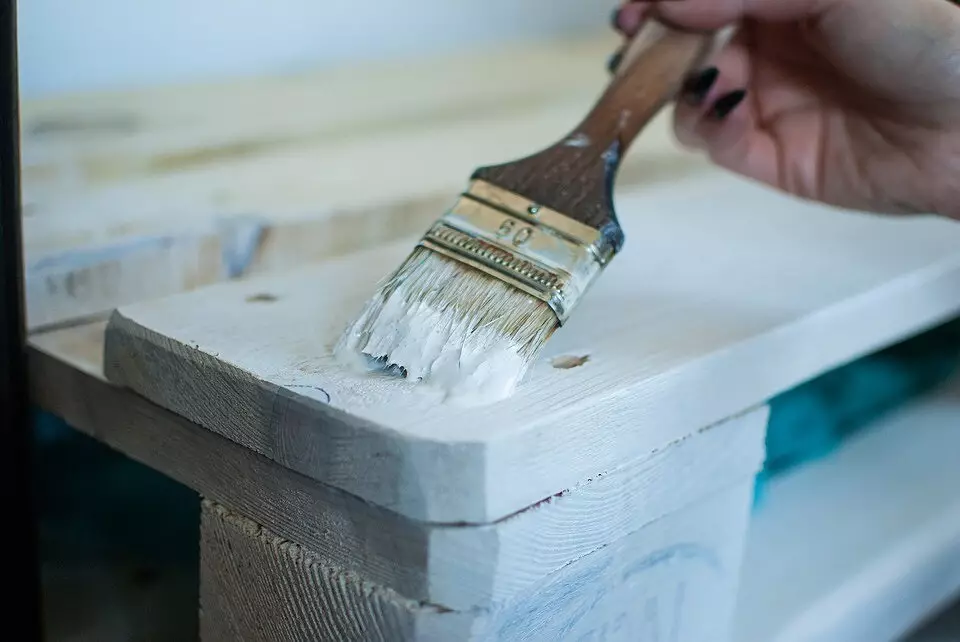
Groups of paints in composition
Acrylic
Acrylic, or that the same, acrylate, paints are solutions of polyacrylate or their derivatives in organic solvents or dispersion (emulsion) in water. The coating formed by them is distinguished by high light, atmospheric and water resistance. If you are looking for which paint it is better to paint a tree, responding - acrylic compositions are ideal for both internal and external work. They are perfectly mixed and conserved, forming a huge (more than 2,000 shades) color gamut.
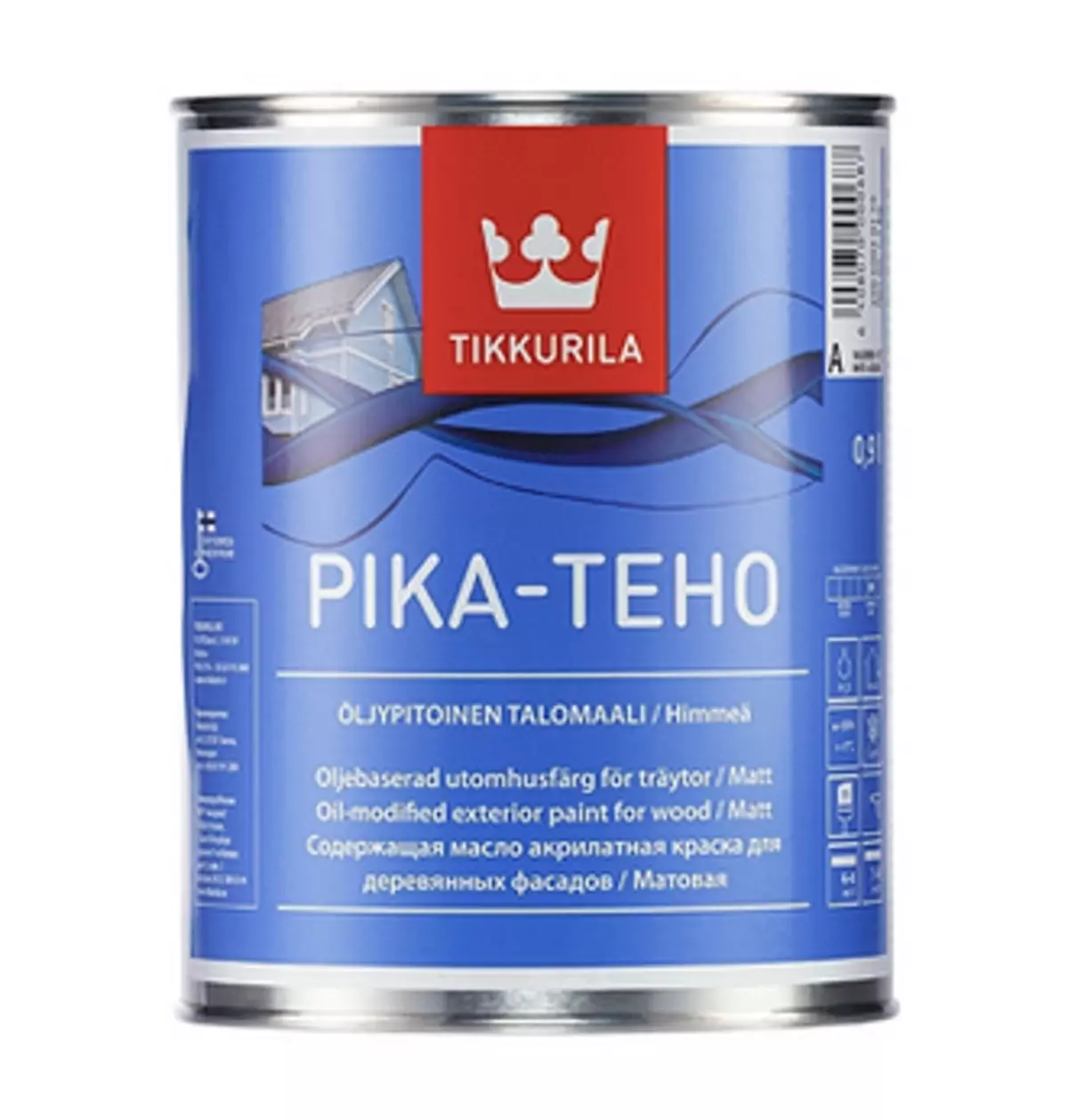
Acrylic Paint Tikkurila Pika-Teho
Water distribution
Water-emulsion (water-solidized or latex) substances - suspensions of pigments and fillers in aqueous dispersions (latexes) homo- and copolymers of vinyl acetates, acrylates and other copolymers, as well as in the aqueous emulsions of alkyd and epoxy resins and other compounds.
Water dispersive compositions are distinguished by simplicity in circulation - the layers are applied with a multiple brush or roller, painting and spraying method is possible. As agrees, wooden elements must be painted again.
Another characteristic feature of water-soluble acrylic paints is durability. The service life is from 4 to 8 years (in some cases up to 10 years). However, cheap representatives of this group are deprived of such dignity, and their use of economically low-income.
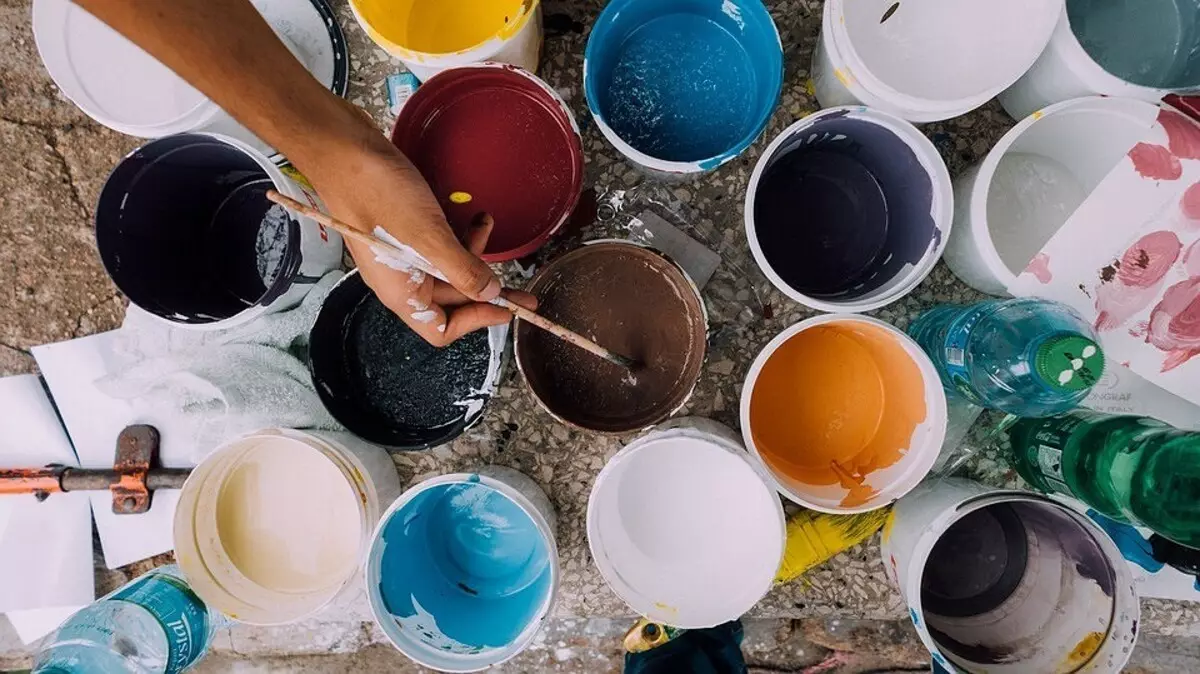
Alkyd varnishes and enamel
Alkyd varnishes based on alkyd resins, mainly glyphthale and pentaphthalic, contain solvents, sequivities and other film-forming additives. Used to make alkyd enamels. Alkyd enamels - paint materials based on alkyd varnishes, are used to protect products from metal and wood.
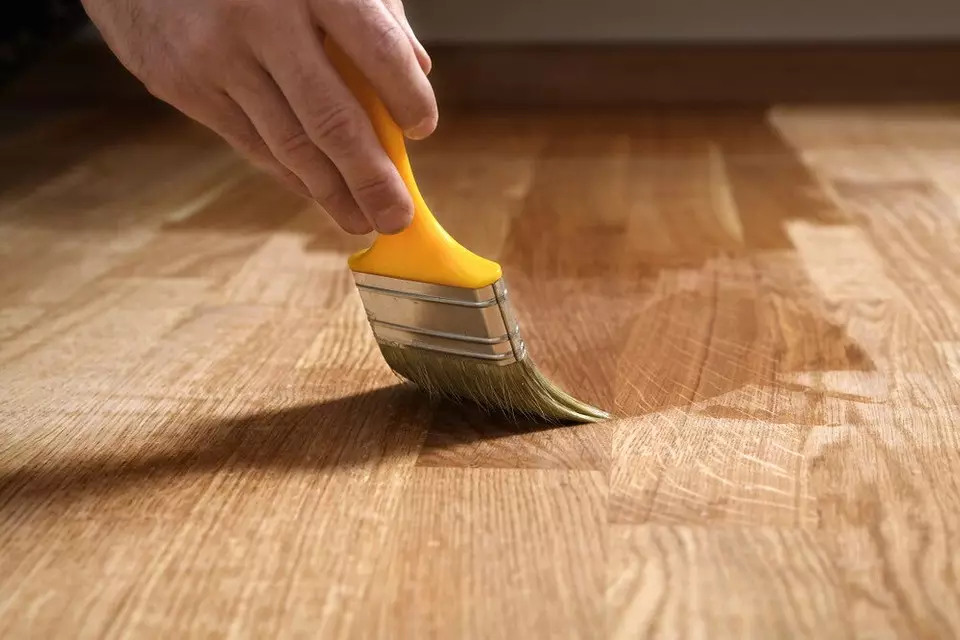
Alkyd varnishes and enamels have long been well known as inexpensive materials. At one time, they began to displace the oil paints from the market. These products have high hydrophobicity (water-repellence) and therefore are used for the inner and outdoor coloring of a wide variety of wooden structures. Their protective effect is due to the fact that a film with a thickness of at least 0.1 mm is formed on the surface.
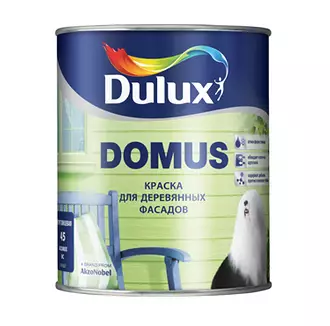
Alkyd Paint Dulux Domus
Because of the fact that the drying of these materials occurs very quickly, they almost do not penetrate the inside of wood and the film paint is not very durable. The peculiarity of these varnishes and enamel is low water and vapor permeability, due to which the building elements covered with them are little affected by moisture fluctuations.
Alkid enamels and enamel based on other binders (alkyd-urethane, acrylate) are used for coloring window frames, doors, floors, that is, precisely those elements that should not change their parameters under the action of moisture.
But it is necessary to remember that, in contrast to the water disperses, enamel can be applied only on well-dried surfaces, as otherwise, when drying wood, bubbles will be formed on the paint-layer and it will begin to be peeling.
Acrylic and polyurethane varnishes and enamel
More modern materials containing organic solvents include acrylic and polyurethane enamels and varnishes. Polyurethane compositions are especially promising, since the coatings based on them characterize high wear resistance and external resistance. However, despite the unique durability, high quality and excellent protective properties, polyurethane materials are used to a much lesser extent than alkyd and even acrylic varnishes and enamels, which is explained by their high cost and toxicity of the initial raw materials (isocyanates). These shortcomings are devoid of acrylic varnishes and enamels, which also have high light and colorfulness. They are used for outdoor and inner color of walls, doors, frames and other building structures.
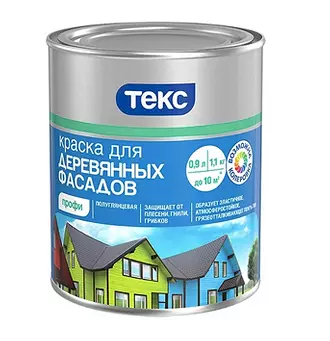
Paint Tex for Wooden Facades Profi
Oil
Oil paints - suspensions of pigments or their mixtures in olifah. Contain desikal and surfactants (surfactants). We are produced by dense (pasty) and ready-to-use (liquid). Recently, the compositions in which the olive is used as a binder, polymerizing after applying to the surface, are still applied. This is due primarily with the emergence of new, more progressive types of substances. It should be noted that among imported paints, oils are practically not found.Additional compounds
Primer - soil for alignment of the color of the base and increasing adhesion (the adhesion of the stratum of paint layers to the base) is very close to the primer.
The primer is a suspension of pigment or a mixture of pigments with fillers, applied to the painted surface and forging after drying a homogeneous opaque film with a good clutch with a surface that provides high-quality applying the finishing of the paint.
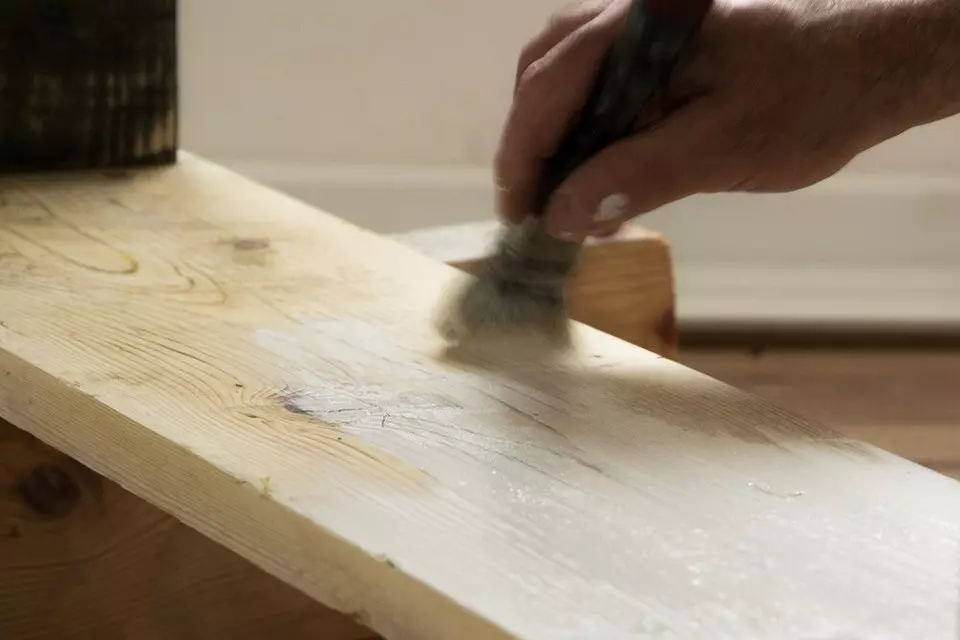
How to choose paints for wood
- Relieve yourself from the wood breed - for the supporting structures (rafters, overlappings, walls), coniferous rocks are usually used, and for interior decoration - wood deciduous or valuable wood species.
- Look at the operating conditions of wooden structures - for example, the presence of high humidity.
- Consider the possibility and methods for pre-processing wooden structures and materials before installation.
- Take into account the possibility of re-processing.
- Pay attention to paint compatibility with previous coatings.
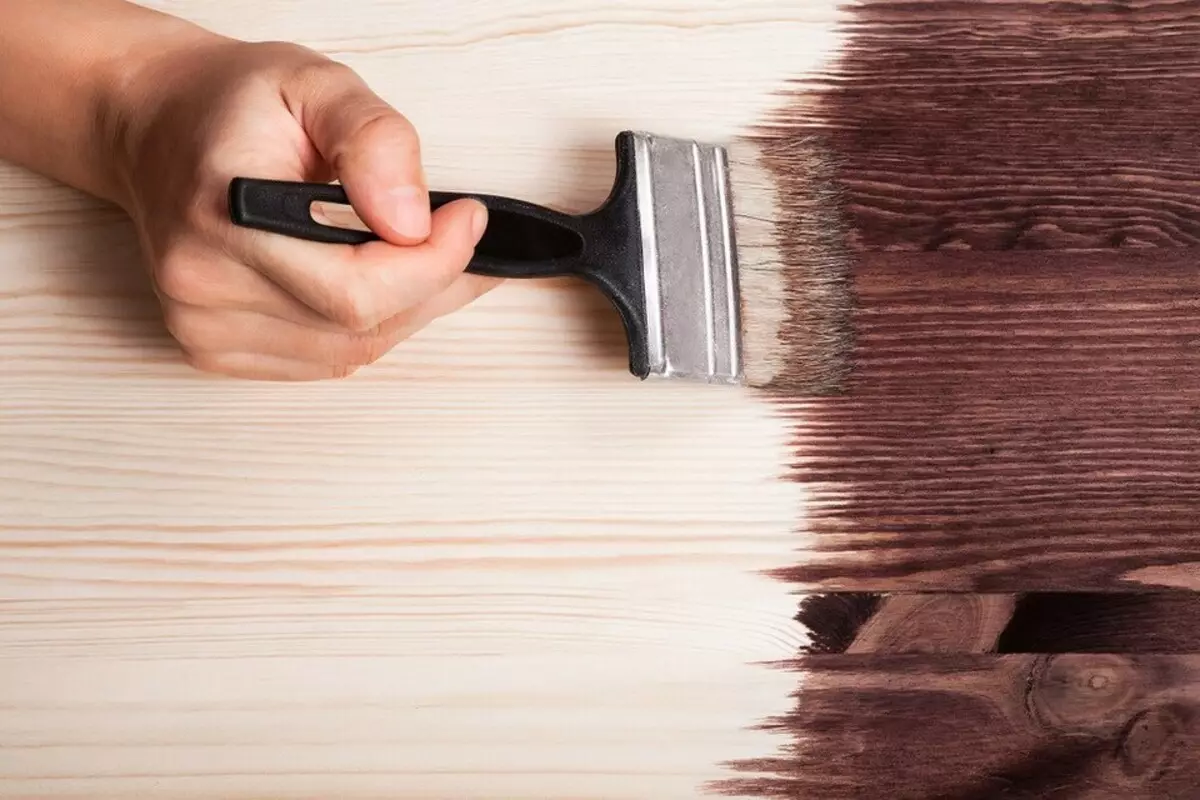
Bonus: Tips for painting a wooden house
The main rule is to apply the composition of the same type as the previous time. But what to do, if no one remembers this, but not preserved cans? In this case, spend the painted surface with an abrasive skurt. If the paint remains on the abrasive, most likely, it is latex (water-distributed), and if it crepts, it is or oil, or alkyd-oil. If the wooden house was last painted more than 10 years ago, then with a very large degree of probability, we can say that or alkyd enamel, or traditional oil paint.
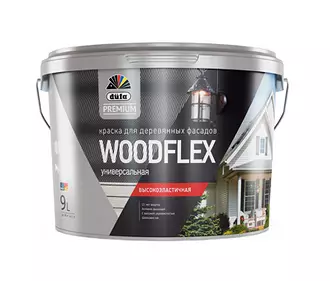
Paint Dufa Premium Woodflex
After the type of paintwork is defined, you need to prepare the surface to the color. To do this, remove the lagging and peeling coating. Usually this is enough, but if the surface has been repainted many times, sometimes you have to delete all the old paint. To make it easier to remove the old oil paint, the surface can be warm up, for example, using a technical hair dryer. You can use various washes for paints. The surfaces to be painted should be dry and cleaned from soot, dirt, fat and dust. Especially relevant for facades - the air is far from being so clean to paint them without careful preparation. Do not regret the time and effort on the preparatory operations, do everything carefully, and then the painted surfaces will have a magnificent look and serve for a long time.



